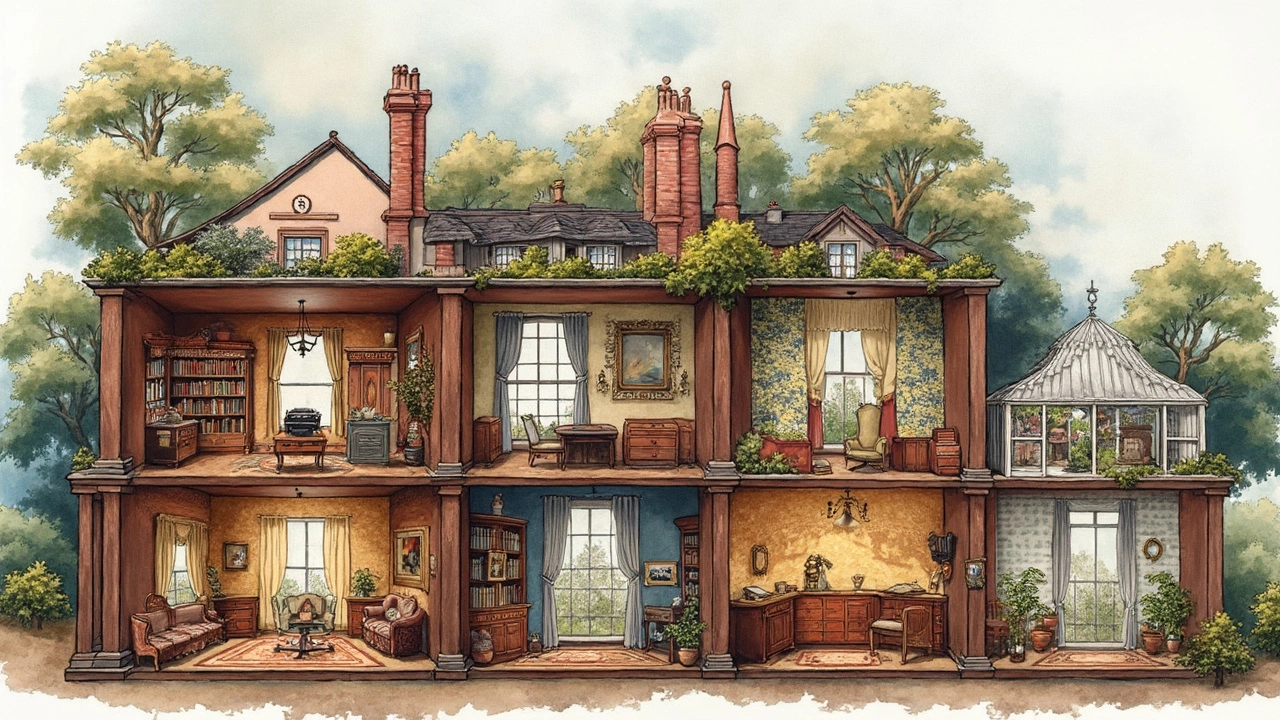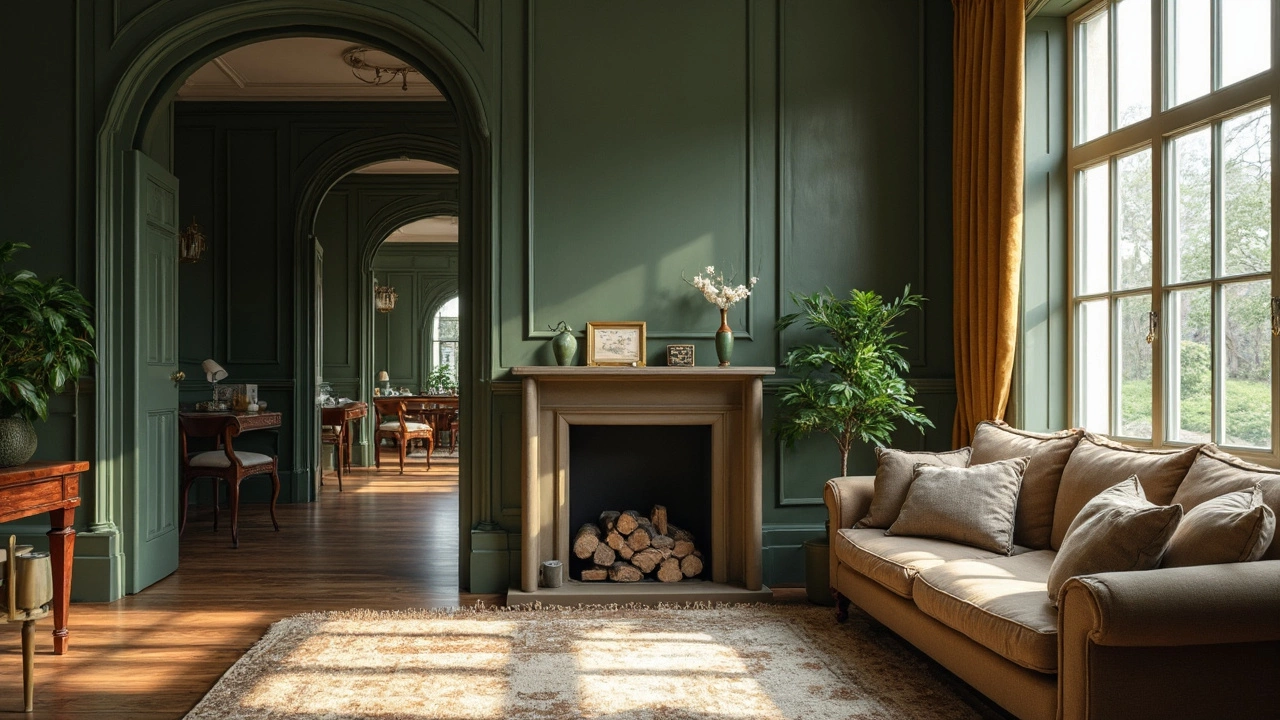Once celebrated for their spacious and airy feel, open floor plans are taking a backseat in 2024. With so many of us spending more time at home—whether working or entertaining—the need for privacy and defined spaces is on the rise. Open layouts simply don't offer the quiet and separation that we've come to crave.
The move towards more secluded and functional spaces reflects our changing lifestyles. Remember those moments when remote work calls overlap with homework time? Yeah, not ideal. This shift doesn't mean going back to cramped, closed-off spaces, though. It's about finding a balance that works for modern living.
- Why Open Floor Plans Are Losing Popularity
- The Need for Privacy and Quiet Spaces
- The Rise of Multi-Functional Rooms
- Design Alternatives to Open Floor Plans
- Practical Tips for Transitioning Your Space
Why Open Floor Plans Are Losing Popularity
Remember when everyone couldn’t stop raving about open floor plans? They promised spacious living and easy flow. But lately, they've started to fall out of favor. What's changed? Mainly, how we use our homes.
Privacy Takes Center Stage
In today's world, privacy has become a premium commodity. With more people working from home than ever before, having separate, quiet spaces is crucial. Imagine trying to hold a conference call while your partner is cooking a storm in the kitchen—it's a recipe for distraction.
The Noise Factor
Noise management is another biggie. Open layouts allow sound to bounce freely, sometimes turning our homes into echo chambers. It's not tough to see why a bit more separation can make for a more peaceful environment.
Energy Efficiency Concerns
Heating or cooling a vast, open area can lead to bloated energy bills. Smaller, enclosed rooms let you control temperatures better, saving you money. Eco-conscious folks are taking note of this perk, shying away from the less-efficient open floor concepts.
While open floor plans aren’t vanishing entirely, the trend is pivoting toward spaces that balance openness with practicality—especially as our homes become multi-functional hubs.
The Need for Privacy and Quiet Spaces
In today's world, where the lines between work and home life blur, privacy is no longer a luxury—it's a necessity. Many of us have transformed dining tables into workstations and living rooms into makeshift offices. This has highlighted a glaring gap in open floor plan designs: the lack of quiet spaces where you can concentrate or relax without distractions.
Ever tried to take a video call while someone's whipping up a smoothie, or the TV's blaring in the background? It's a recipe for stress and can affect productivity. That's why homes with designated workspaces are becoming valuable, offering the peace and separation people need.
The Rise of Dual-Purpose Rooms
Homes today have to do double duty. A guest room becomes a home office, the basement a gym. With more customized spaces, families find they can better meet everyone’s needs without stepping on each other's toes. For instance, adding sliding doors or partitions can create functional rooms without permanent changes.
| Feature | Benefit |
|---|---|
| Separate Home Offices | Reduces noise and increases concentration |
| Quiet Zones | Offers a retreat for meditation or reading |
Designing with privacy in mind doesn’t only improve productivity; it also fosters a more relaxed and happy home environment. Kids can focus on their homework while parents attend virtual meetings, all without the usual interruptions.
So, while the open layout may have its charm, it seems our changing lives demand spaces that consider personal boundaries and the value of a little silence. This shift is an opportunity to rethink what 'home' means and how it can serve us best.

The Rise of Multi-Functional Rooms
As our needs evolve, homes are no longer just places to live—they're where we work, play, relax, and even exercise. Enter multi-functional rooms, a savvy response to our increasingly dynamic lifestyles. These rooms aren't just a passing trend; they're a smart way to maximize every square inch.
One clear advantage of these adaptable spaces is flexibility. Imagine a room that seamlessly transitions from office to guestroom, or a dining area that doubles as a homework station. The key is thoughtful design and the right furniture pieces. Sofa beds, fold-down desks, and modular shelving all make the transformation easy and stylish.
Designing for Multiple Uses
Start by considering what activities you need space for and prioritize them. For example, if working from home is key, carve out an area with good lighting and storage. Use dividers or rugs to visually separate different functions within the same room.
- Choose furniture that serves more than one purpose, like a coffee table that stores board games or a dining table that extends for larger gatherings.
- Opt for neutral colors and decor that can easily adapt to different uses—think light walls and adaptable lighting options.
Beyond Walls: Outdoor Transformations
Don't forget your outdoor areas. Patios and decks can morph into living or cooking spaces with the addition of retractable awnings and portable furniture.
In fact, according to a 2023 survey by Home Design Trends, about 58% of homeowners have invested in dual-purpose furniture over the past year. That number is climbing as people look to get the most out of their spaces.
So, if your home needs a little more versatility, consider the power of multi-functional rooms. Not only do they make better use of your space, but they also adapt to your life as it changes.
Design Alternatives to Open Floor Plans
As we shift away from open floor plans, it's time to explore some fresh, practical alternatives for your living space. These options cater to our need for privacy without sacrificing style or functionality.
1. Create Defined Zones
Instead of one vast space, consider using furniture to carve out different "zones." A tall bookshelf or a cozy sofa can act as natural dividers, giving purpose and structure to each area. This approach maintains an open feel while providing distinct spaces for work, relaxation, and play.
2. Sliding Doors and Partitions
Want flexibility? Sliding doors or moveable partitions offer the perfect solution. You can close them to create separate rooms when needed or open them up for larger gatherings. These elements add versatility, making your home adaptable to various activities and occasions.
3. Embrace the Multi-Functional Room
Multi-functional rooms are the new norm. Transform a spare bedroom into a home office that doubles as a guest room. Use creative storage solutions, like under-bed drawers or wall-mounted desks, to maximize space. This approach is both efficient and stylish.
4. Incorporate Biophilic Design
Nature is a great healer. Bringing elements like plants, natural light, and organic materials into your home can create a sense of serenity. Use plants as dividers to add a breath of fresh air and visual privacy between spaces.
5. Opt for Traditional Layouts
There's no shame in revisiting traditional layouts with separate rooms for each function. These setups can offer the privacy and defined spaces many crave, especially in busier households.
| Approach | Benefit |
|---|---|
| Defined Zones | Organized, purposeful spaces |
| Sliding Doors | Flexibility and privacy |
| Multi-Functional Rooms | Efficiency and style |
| Biophilic Design | Calming, natural atmosphere |
| Traditional Layouts | Structured and private |
So, there you have it! These alternatives aren't just on-trend; they respond to our evolving lifestyle needs, ensuring our homes remain functional, stylish, and personal. Don't be afraid to mix and match approaches to suit your unique taste and needs.

Practical Tips for Transitioning Your Space
So, you’re thinking about saying goodbye to that open floor plan? Good news—there are quite a few straightforward steps you can take to partition space without blowing your budget or knocking down walls.
Use Room Dividers or Curtains
One of the simplest fixes is to use room dividers, which can range from bookshelves and screens to curtains. These options are not only flexible but also affordable. A stylish bookshelf can separate your living area and dining corner while providing extra storage.
Rearrange Furniture
It’s amazing what a little furniture rearrangement can do. Position sofas and tables to define distinct areas. Use rugs to anchor each section, signaling different zones without actual barriers. Think of the space as a puzzle, where couches and chairs help solve the design challenge.
Consider Partial Walls or Half-Walls
If you're ready for more substantial changes, installing partial or half-walls can help create separation without compromising light and openness. These structures add architectural interest and can even double as breakfast bars or desks.
Create a Nook for Work or Study
In today’s world, having a private spot for work or study is invaluable. You might want to carve out space in an underused corner for a desk, adding a bit of shelving above it for functionality. A cozy nook not only increases productivity but also keeps work life from bleeding into personal time.
Embrace Multi-Functional Furniture
Multi-functional furniture can make all the difference in limited spaces. Look for pieces like foldable desks, extendable tables, or even Murphy beds. These items adapt to your needs, making your home both versatile and organized.
| Option | Approx. Cost |
|---|---|
| Room Dividers | $50 - $300 |
| Partial Walls | $500 - $1500 |
| Multi-Functional Furniture | $100 - $1000 |
Remember, the goal is to make your space work for you, adapting to your lifestyle while maintaining a cozy and functional environment.


